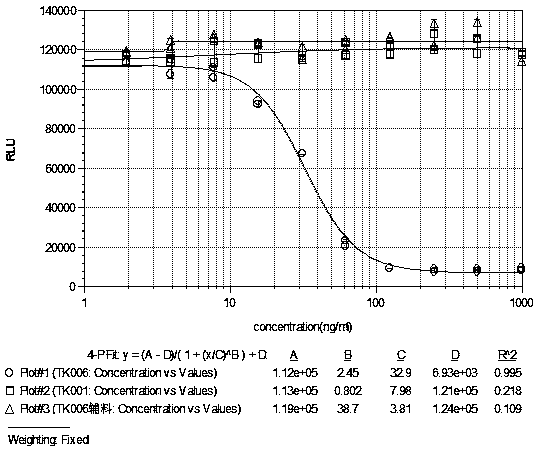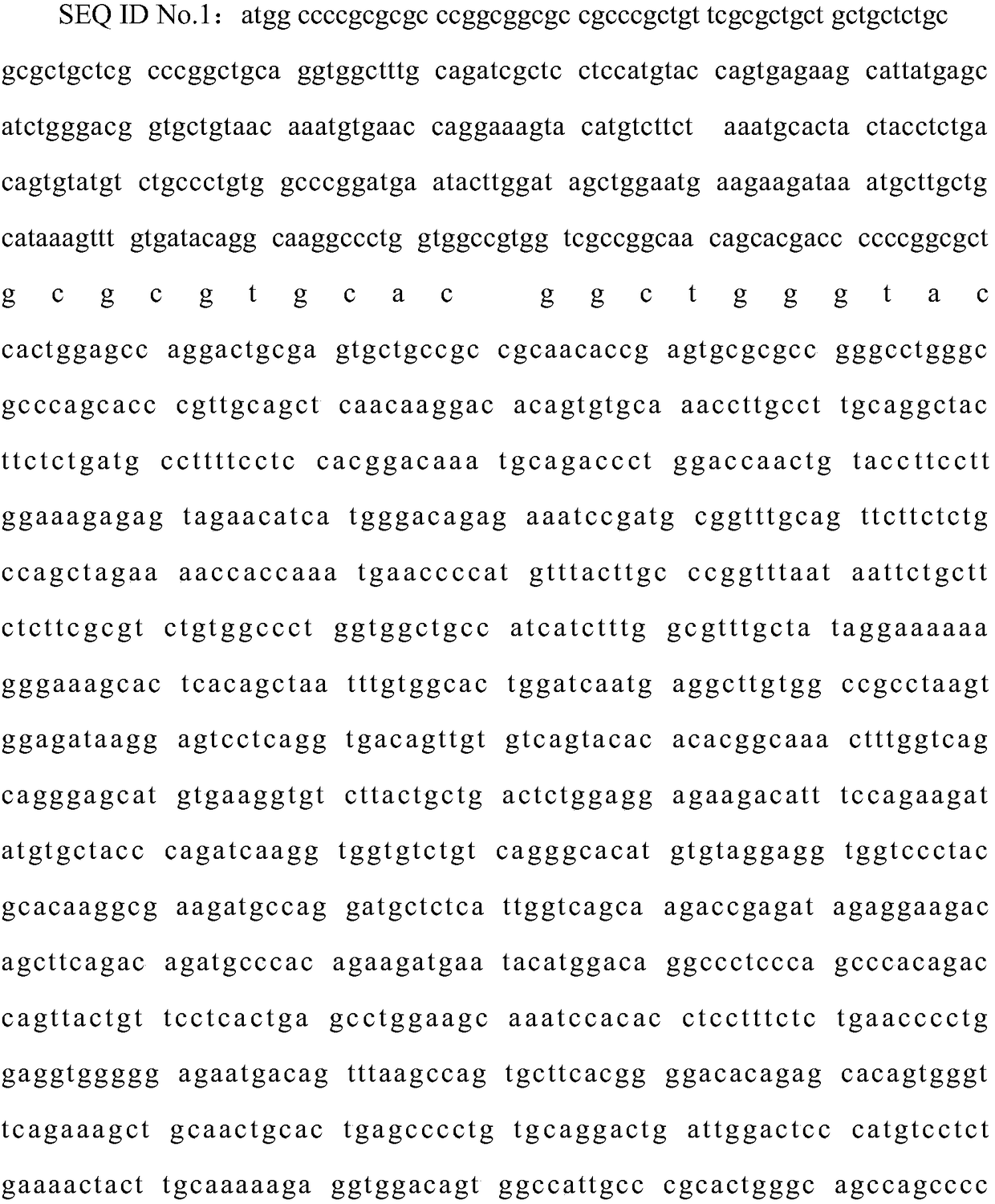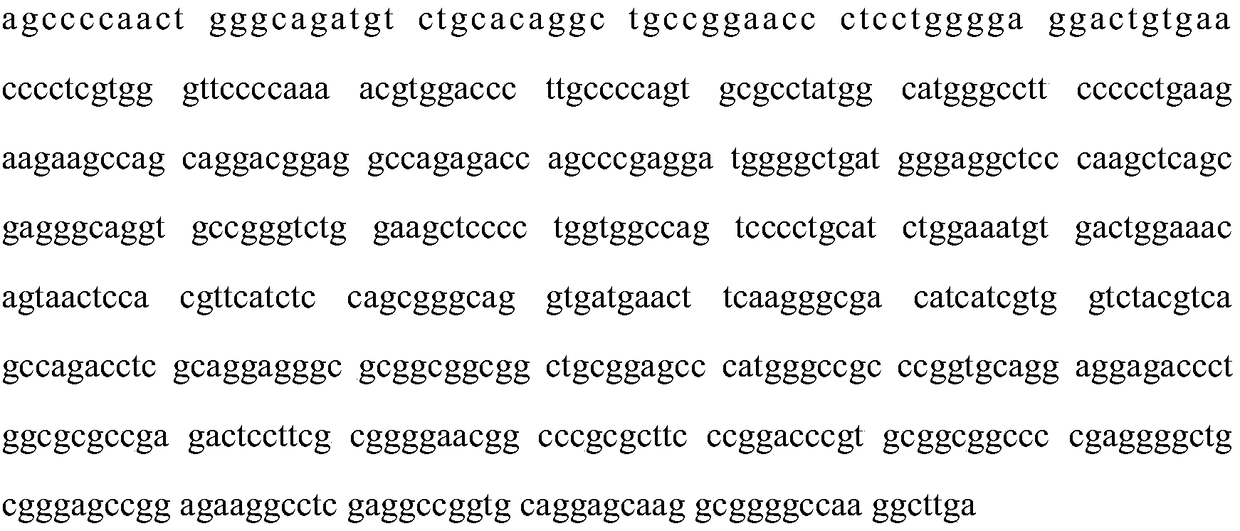In vitro test tool and method for evaluating biological activity of RANKL target spot compound
A technology of biological activity and detection method, applied in the field of in vitro detection of RANKL target compounds, can solve the problems of difficulty in ensuring the stability and reliability of detection results, poor method accuracy and precision, and long experimental period, and achieve serum Highly Tolerable, Accurate, and Specific Effects
- Summary
- Abstract
- Description
- Claims
- Application Information
AI Technical Summary
Problems solved by technology
Method used
Image
Examples
Embodiment 1
[0035] Resistance Drug Concentration Screening in Example 1 Tool Cell Construction
[0036] HEK293 cells (purchased from ATCC) were plated on 24-well plates, and when the cells grew to a confluence of 90%, the cells were digested, and 50% of the cells were mixed with different concentrations of Hygromycin B (20 μg / ml, 25 μg / ml, 40 μg / ml ml, 75 μg / ml) and G418 (200 μg / ml, 400 μg / ml, 600 μg / ml, 800 μg / ml) were mixed and spread on a 24-well plate. Culture for 1 to 2 weeks, so that the lowest concentration of Hygromycin B and G418 used to make all the cells die is the resistance screening concentration. During this period, when the confluence of the cells in the plate reached about 90%, they were passaged at a ratio of 1:4. The results showed that the concentrations of resistance screening drugs G418 and Hygromycin B were 800 μg / ml and 25 μg / ml, respectively.
Embodiment 2
[0037] The construction of embodiment 2 tool cell construction
[0038] Transfer the blank HEK293 cells to a T75 flask and culture them until the confluence reaches over 90%, collect the cells, add plasmid A (self-constructed) and plasmid B (purchased from Promega) at a certain ratio at the same time, electric shock at 250V for 30ms, and culture after 24 hours The base was replaced with fresh DMEM medium (containing 10% FBS). The cell density reached 90% after 72 hours of transfection, inoculated in a new T25 flask at a ratio of 1:1, and replaced with a medium containing Hygromycin B and G418 for screening, and screened for a period of time to obtain a stable transfected cell line Afterwards, monoclonal cells were picked and expanded using the limiting dilution method. Add RANKL stimulation to the candidate monoclonal cell line, detect the response value, and select the monoclonal cell line that meets the requirements, that is, the clone strain with high background value and ...
Embodiment 3
[0041]Embodiment 3 specificity evaluation experiment
[0042] Using the monoclonal antibody drug against the RANKL target (TK006, refer to CN 103232539B for the specific preparation method), the monoclonal antibody drug against the VEGF target (TK001, refer to CN101935349 B for the specific preparation method), and the drug excipient solution as materials, the above detection The method steps are tested, and the results are as follows figure 1 , when this method is used for anti-VEGF monoclonal antibody and drug excipients buffered saline solution, it is impossible to perform four-parameter fitting on the results, but the detection results of anti-RANKL monoclonal antibody in the figure can draw a complete dose-effect curve, and at the same time meet the Combined coefficient R 2 >0.98, CV% of multiple holes <20%. The experimental results show that the method of the present invention has good specificity.
PUM
 Login to View More
Login to View More Abstract
Description
Claims
Application Information
 Login to View More
Login to View More - R&D
- Intellectual Property
- Life Sciences
- Materials
- Tech Scout
- Unparalleled Data Quality
- Higher Quality Content
- 60% Fewer Hallucinations
Browse by: Latest US Patents, China's latest patents, Technical Efficacy Thesaurus, Application Domain, Technology Topic, Popular Technical Reports.
© 2025 PatSnap. All rights reserved.Legal|Privacy policy|Modern Slavery Act Transparency Statement|Sitemap|About US| Contact US: help@patsnap.com



